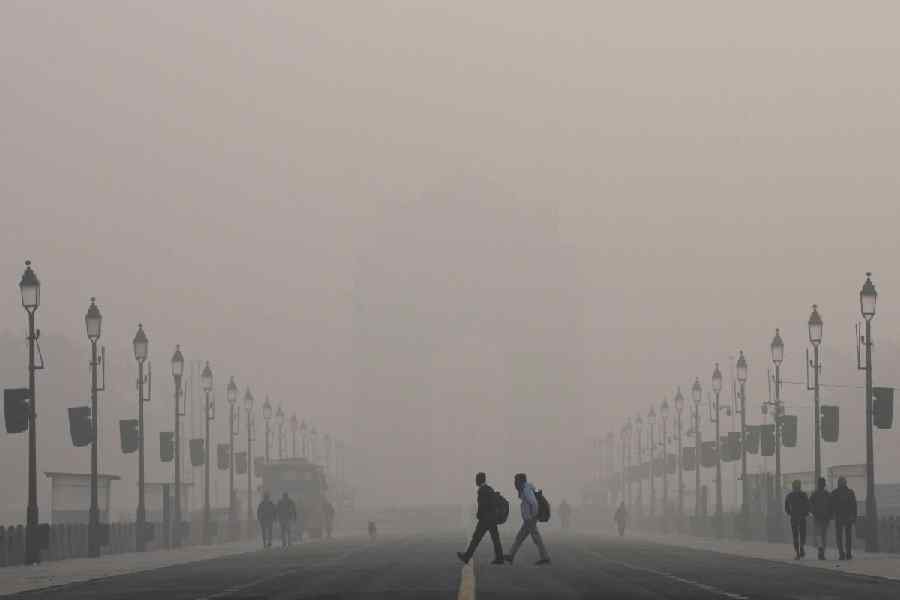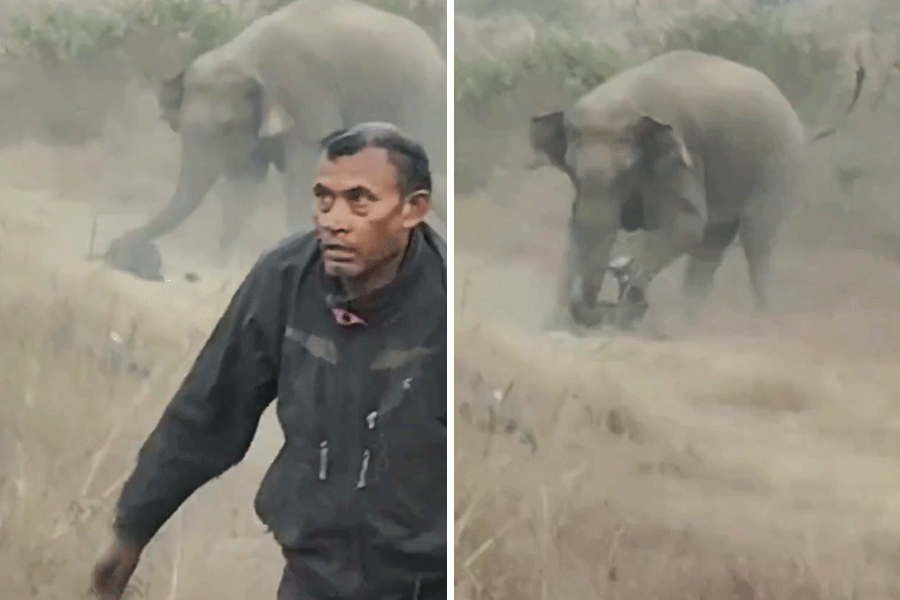 |
Sharmila cannot ever forget that night. Six months ago, the 15-year-old Delhi student stayed back at her friend Gayatri’s house after a late party with classmates. They were in bed, chatting with each other, when Gayatri suddenly started caressing her. That was just the beginning.
Since then, every other week they are at each other’s house, spending intimate nights together. “I felt odd to begin with. But after a few minutes, I started enjoying the caresses. It is good to connect sexually to a person I am emotionally connected with,” says Sharmila, a Class IX student of a reputed co-educational school. “Gayatri had never attracted me sexually before that first night. But now she does.”
Same sex relationships in schools have so far mostly been a boarding school phenomenon, especially in all- boy schools. But increasingly, counsellors have been noting a rise in gay relationships in schools among both boys and girls, some of them as young as 12.
“A sexual revolution is happening in urban India,” says Gaurai Uddanwadikar, head of Counseling India, a psychotherapy clinic in Bangalore. “There is more openness and less inhibition about sex in general. So homosexual relationships are also becoming more common.”
For many youngsters, though, an alternative sexual orientation is still a matter of shame. Just before his school finals, Lucknow boy Paresh Aggarwal had gone into a shell. He would lock himself up in his room for hours, painting his nails. He stopped studying and talking to his parents, who initially thought he was reeling under the stress of examinations. But when they met Delhi counsellor Geetanjali Kumar, Paresh gradually opened up.
“A lot of our sittings were spent in silence. I started talking about his interest in nail paint, his favourite colours and his relationship with his friends. After a couple of sessions, he gathered the strength to tell his mother that he was sexually attracted to boys,” says Kumar.
But experts stress that many students have been indulging in same sex relationships purely on an experimental basis. “The pre-teen is an age when children want to experiment with everything they have heard and read about. Since they are increasingly hearing about homosexuality in the public space, there is increasing experimentation as well,” says Uddanwadikar.
Indeed, for young students today, gay is no longer a dirty word. Developments in the last few years have brought gay activities out of the closet. The law has sought to decriminalise homosexuality; men and women flaunt their sexuality in colourful gay parades and several films have focused on gay themes in the recent past. “Society has started accepting gays,” says gay rights activist Gautam Bhan.
Delhi-based counsellor Etishree Bhati, who is attached to a reputed south Delhi school, points out that though there are ample opportunities for students to indulge in heterosexual relationships in her co-ed school, many have been showing sexual interest in students of the same gender.
“If three years ago two children came forward to discuss their same sex relationships, now there are at least five new cases every year,” she says. Delhi counsellor Bhavna Barni adds that she has seen a 20 per cent increase in the number of cases of school students exploring gay relationships in the last five years.
The trend is not limited to Delhi. “We are seeing this in an increasing number of children studying in Mumbai’s posh schools and belonging to affluent families,” says Dr Kersi Chavda, consultant psychiatrist at Mumbai’s PD Hinduja National Hospital and Medical Research Centre.
Calcutta isn’t very different either. “These days, teenagers are courageous enough to openly speak about ‘not so conventional’ relationships,” stresses Calcutta-based educationist Malini Bhagat.
The difference between the situation today and five years ago isn’t just the rising numbers, but the attitude of the teens as well. “Children don’t see a same sex relationship as an anomaly. It comes up in their regular conversation and they don’t see it as a big deal,” says Calcutta’s child and adolescent psychiatrist Gargi Bandopadhyay.
Not all parents see the development in the same light. Last year, the parents of a 12-year-girl, Neha, took her to Dr Barni, a senior child and clinical psychologist at the Escorts Fortis Hospital in Delhi, for counselling. Neha, who studies in a public school in Delhi, told Barni that she had got physical with her girlfriends.
“She said she felt comfortable with them and physical intimacy had been a natural outcome of this comfort factor,” recalls Barni. Neha also felt alienated from the boys in her class who teased her about her weight.
Barni believes there is an increasing trend towards homosexuality among students of Class V and VI. With the growing incidence of rape and abuse — and media focus on such incidents — young children are perceiving relationships with the opposite sex as threatening. Bangalore psychologist Sulata Shenoy adds that parents are so afraid of children having opposite sex relationships that they often encourage same sex friendships hoping that it would postpone opposite sex relationships.
“In the pre-teen age group, most children feel most comfortable with peers of the same sex. And since sexual exploration is starting at an early age today, they tend to involve partners of the same sex,” explains Barni.
But not everybody believes there is cause for concern. “Human sexuality goes through peaks and troughs during the course of development at the age of 10 to 17 years,” says Shenoy, a child psychologist at Turning Point Centre for Guidance, Bangalore. “Also, both male and female hormones surge and decrease at different growth points — all this causing sufficient confusion to the child about his or her sexuality and sexual orientation. Hence, there is curiosity to explore and tendency to experiment.”
With youngsters becoming aware of their body, there is always a desire to experiment, the experts point out. “At this age, they are trying to figure out how their body reacts and the pleasures it can give. It is but natural that they will try it out with friends they can trust,” explains Magdalene Jeyarathnam, director of Chennai’s East West counselling centre that offers same sex counselling and conducts group therapy for the lesbian gay bisexual transgender community.
This is when adolescents are unclear about their own sexuality. “For some, these feelings and thoughts can be intense and even confusing. They often tend to ask themselves ‘what does this mean?’ or ‘am I gay?’ It is this quest to seek answers to questions within themselves that they experiment with people of the same sex,” says Bhati.
To help youngsters resolve the questions in their mind, sex education in schools needs to be strengthened and children have to be sensitised about how to handle such relationships, feels Bhagat. “Some orientation is needed for school children to create an environment conducive for gays and lesbians in educational institutions. We often do it by showing films based on the issue in our film clubs,” she says.
Sunil Gupta, gay rights activist and photographer, thinks that while teenagers should be made aware of the fact that such relationships exist, they should experiment within limits. “They should be able to make an informed choice when they become adults. But at this age, they should be cautious about experimenting,” he says.
Being too young to understand the intricacies of relationships, abuse is quite common among gay partners at this age, experts warn. “Infidelity is common in such relationships and therefore there is abuse too. At least 10 per cent of same sex relationships that I come across in my school involve abuse to a certain extent,” says Bhati.
Experts say parents have to extend a helping hand to their children as they grapple with such issues. According to Calcutta psychiatrist Rima Mukherjee, parents often ask her to “cure” their child of the “disease” of homosexuality. “In a recent case, electric shocks were given to a boy to help him regain ‘normality’,” she says.
Sulata Shenoy urges parents to accept that any child can have sexual feelings which are natural in the course of growing up into adulthood. “It is best not to panic or overreact, but be calm, and at the same time tell children about sexuality and sexual practices so that they don’t grow up with a sense of guilt or anxiety,” she says. “As a society, too, the time has come for us to face these issues and not to brush them under the carpet of ignorance.”
The Telegraph conducts a snap survey of parents in Calcutta and Delhi, and finds that most believe being gay in school is just a phase
 |
(Names of students have been changed to protect their identities)
With inputs from Varuna Verma in Bangalore, Kavitha Shanmugam in Chennai and Moumita Chakrabarti in Calcutta











